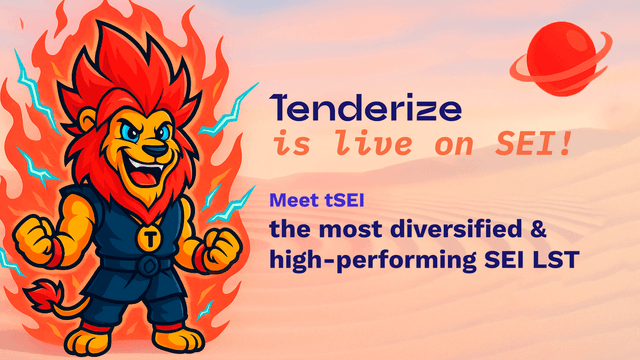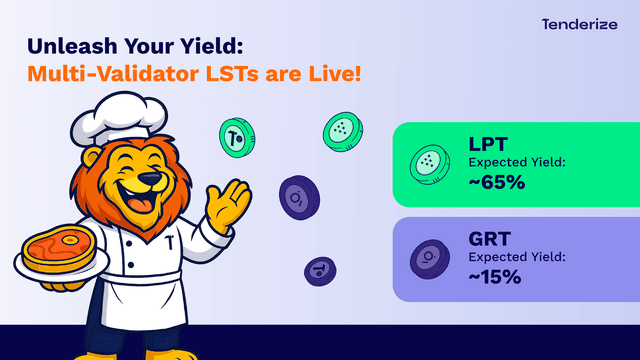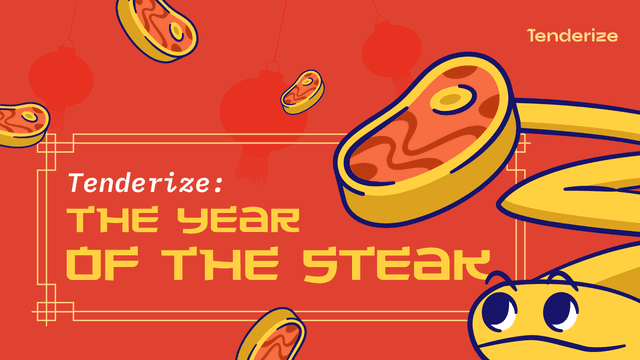Capital diversification for Web 3 protocols: How Tenderize is tackling it
Jun 24, 2022 • 3 min read

Web 3 is generating a new token economy, built upon the growth and development of protocols, resulting in a new connection between capital and products.
Until Web 3, DeFi relied upon unsustainable token emissions to generate yield, resulting in a self-fulling capital cycle with a short-term end in sight. DeFi has its own unique set of advantages for people and protocols, but a new iteration of the open economy is emerging to provide a new and sustainable future.
Web 3 and DeFi need vehicles for capital allocation based on trust, decentralization, and long-term sustainability, with diversification at the helm.
Tenderize is tackling this issue directly by building the go-to protocol for individuals and Web 3 protocols to diversify their tokens in a liquid and attractive manner.
How have rewards been generated until now in a DeFi ecosystem?
DeFi can be very profitable for new projects and investors focused on arbitrage and short-term opportunities beyond the long-term sustainability that blue-chip projects offer.
For the not-so-blue chip projects, the strategies to offer very attractive rewards are based not on protocols’ uniqueness, growth, or competitive advantage but rather on “artificially” tricking the capital flows system. What do we mean?
DeFi protocols can earn and offer rewards through lending, staking, trading fees, or liquidity pool incentives. If that’s the case, what is the issue?
When new projects don’t have the necessary liquidity for pools to operate organically, they unsustainably issue tokens as rewards for investors to take part in those pools. This way, the amount of rewards skyrockets for new investors, but the token supply and risks of an unstable system also grow.
This flow has worked with leading DeFi projects, but the success rate is low if projects don’t have a unique angle in the market and cannot gain real adoption.
Why is Web 3 better?
Web 3 protocols have designed their protocols to be linked to token rewards. Web 3 infrastructure builds upon a real cycle between growth and benefits for the end-user and protocols.
As Web 3 infrastructure projects grow, more rewards are issued for those who did the work, which raises the quality and output of the protocols, attracting more customers, generating even more rewards due to the rise in computational work, and so forth.
Web 3 engineered a system where success leads to more success while being based on real adoption metrics, generating revenue from their unique solutions, and issuing tokens that represent utility.
How big can Web 3 be?
Web 3 is still in its early stages. The amount of revenue that Web 3 generates today is marginally small compared to Web 2 or the growth potential of the new open economy.
In 2022, the revenue estimation for global network infrastructure was over $200 billion, while Amazon Web Services alone generated $62 billion in revenue last year.
In contrast, the top 5 revenue-generating protocols in crypto slightly crossed $10 billion in the last 12 months. Livepeer, Pocket Network, The Graph, or Helium are examples of Web 3 infrastructure providers increasing their node revenue in recent months and issuing more tokens due to their growth.
What to do with available tokens from sustainable growth?
If Web 3 protocols generate this crypto-based capital, how can they use it within a decentralized environment, diversify, and expand their offerings?
Why would they want to do this?
Did you know that Porsche makes more money from their investments than from selling cars? In particular, with derivatives. If one of the most prestigious companies in the world relies upon the right allocation of working capital, why would most successful Web 3 protocols not employ a similar strategy?
Moreover, Web 3 protocols have the flexibility of a crypto native ecosystem designed for superior rewards and more freedom while benefiting the end-user and protocols.
Tenderize offers flexibility, return potential, and the diversification needed in a fully decentralized ecosystem. By introducing liquid staking through derivatives, Web 3 protocols and individuals can diversify their original Web 3 tokens, have full control over their holdings due to a 0-day lock-up period, and generate a cascade of returns from staking to liquidity providing.
Tenderize works as a streamlined flow for investments, starting with converting your original tokens into derivatives through TenderTokens on a 1:1 basis, and from there, those derivatives multiply into more rewards. First, from staking, then from farming, and finally, through liquidity providing.
Tenderize effectively removes the issues of complex token lock-ups and frustrations of the Web 3 token economy to offer people diversification, freedom, and opportunities.
Are you ready to start? Tenderize is now fully live. Check this tutorial and start staking!
Alpha in your inbox,
Subscribe now!
Subscribe to our newsletter and receive exclusive insights and be the first to know about new releases.
We will never spam you.



